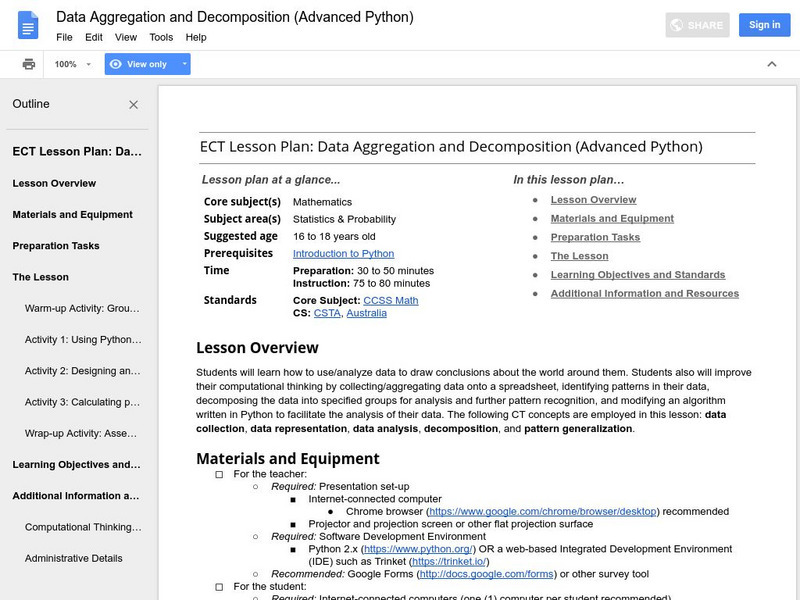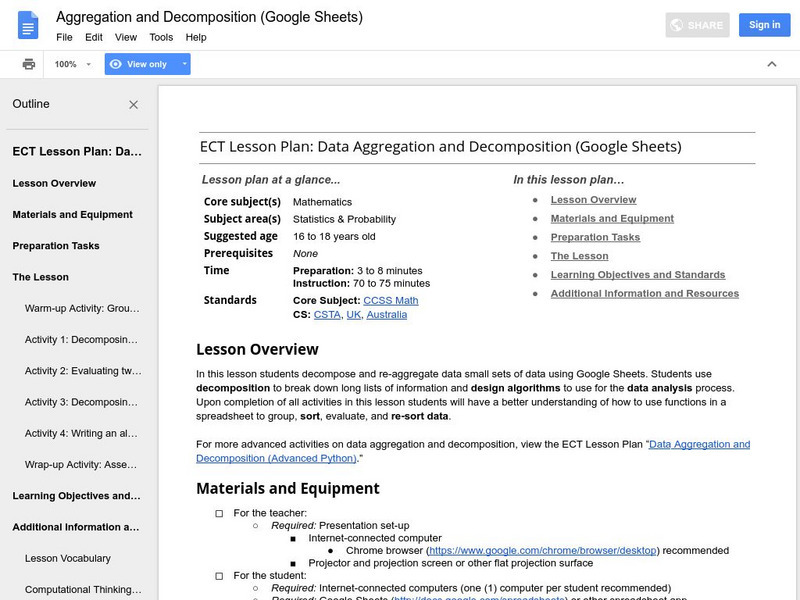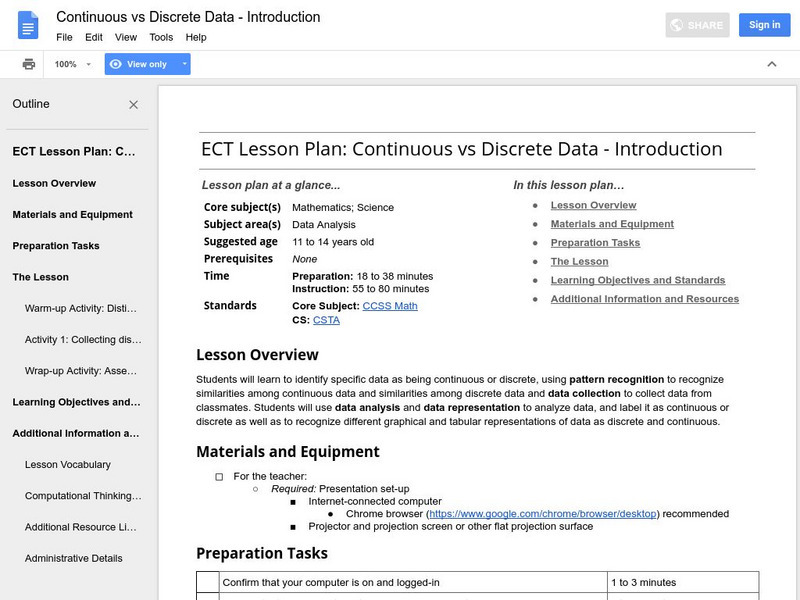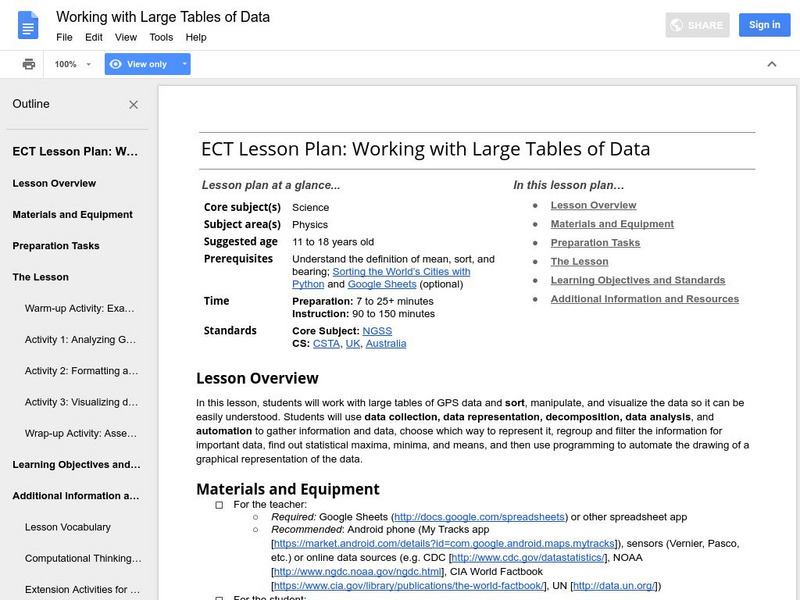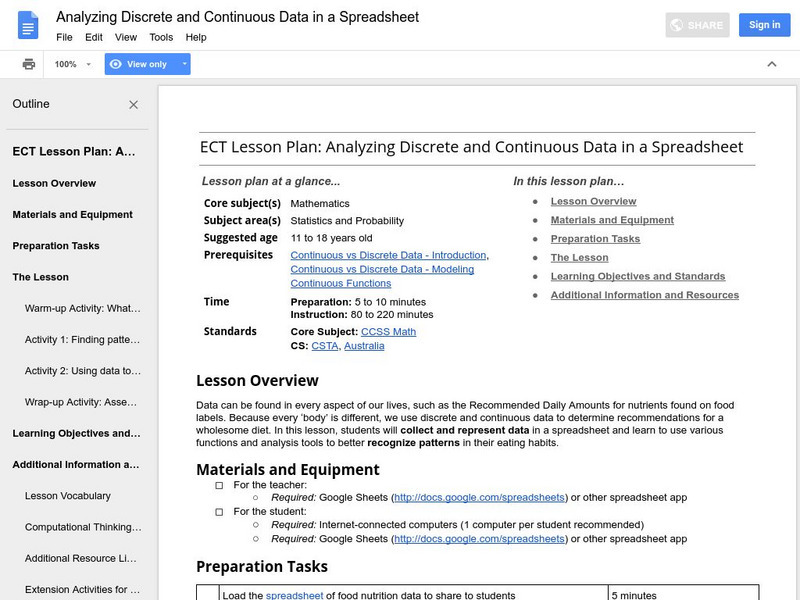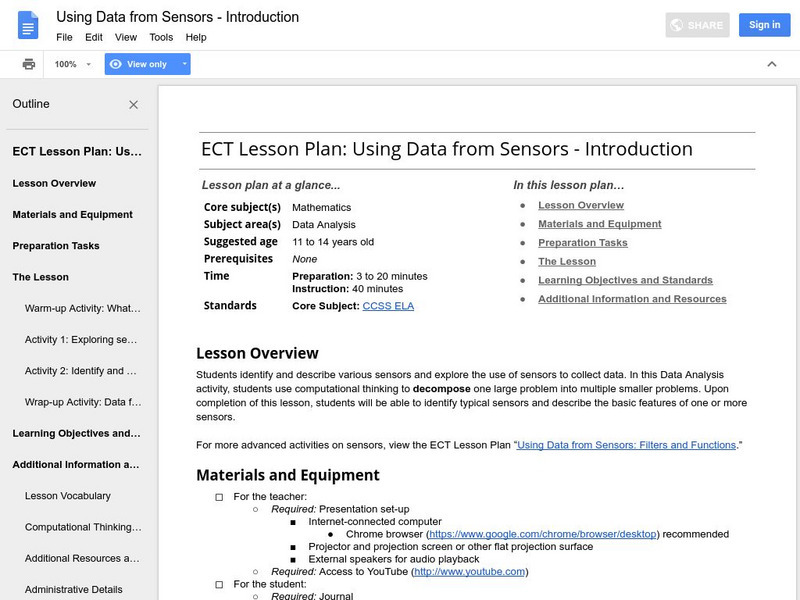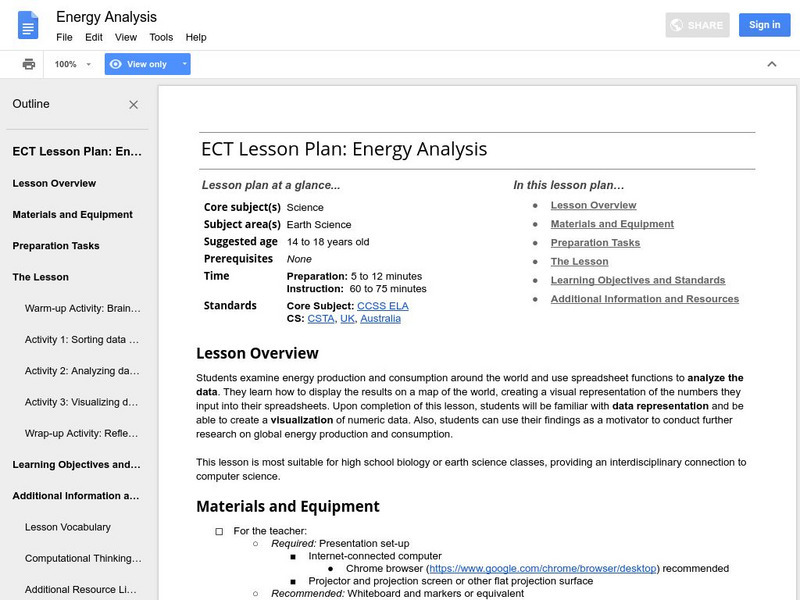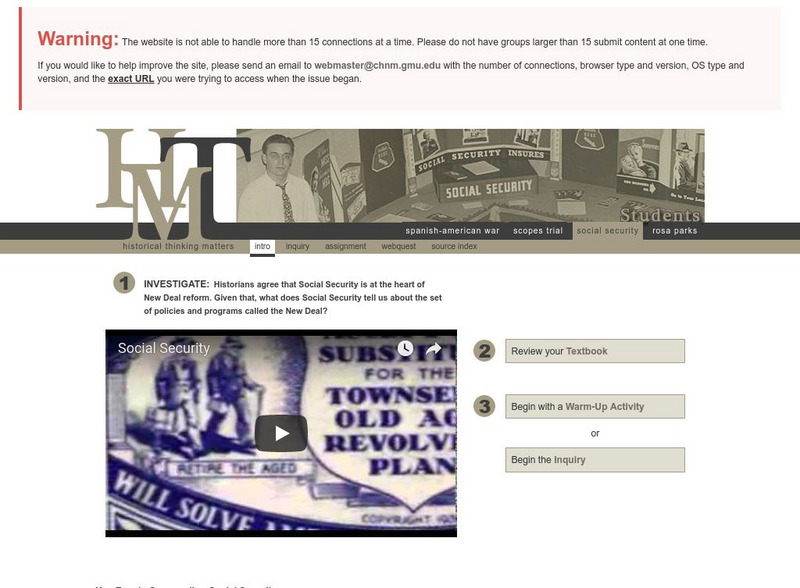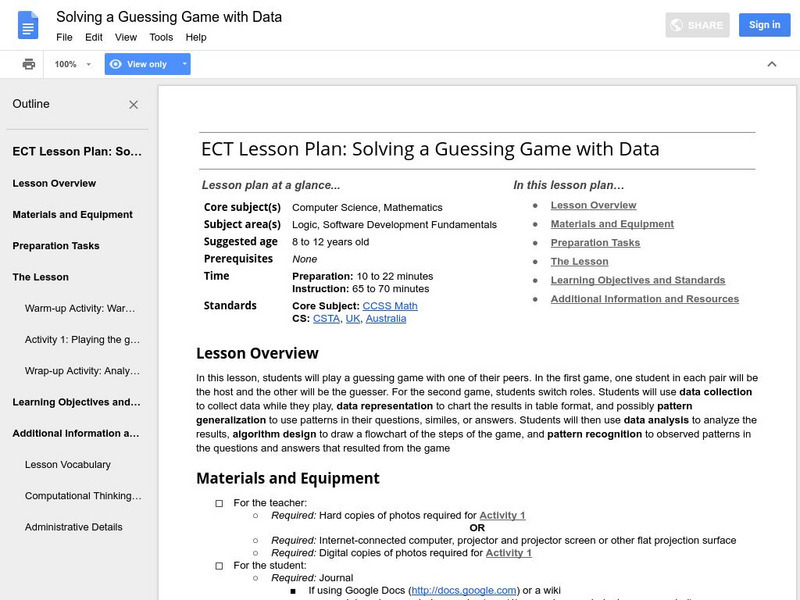Google
Google for Education: Data Aggregation and Decomposition (Python)
Students learn how to use and analyze data to draw conclusions about information collected from classmates. Then they use computational thinking by collecting and aggregating data onto a spreadsheet, identifying patterns in their data,...
Google
Google for Education: What Is Data
The purpose of this instructional activity is to show students what data is and how prevalent it is in their lives They also learn how to use data to make informed decisions. These activities are an excellent way to introduce the year as...
Google
Google for Education: Data Aggregation and Decomposition (Excel)
By using Microsoft Excel, students collect, decompose, and re-aggregate class data. Students use computational thinking skills by decomposing long lists of information and writing basic algorithms to help analyze data.
Google
Google for Education: Continuous vs Discrete Data
When working with data, it is important to know whether it is continuous or discrete, as this will determine what calculations can be applied and what information can be extracted from it. Here, students to distinguish between continuous...
Science Education Resource Center at Carleton College
Serc: Learning About Dimensional Analysis and Stoichiometry
Help your students learn the skill of dimensional analysis and the importance of mastering that skill. In this activity, students will work on their critical thinking by solving dimensional analysis problems. The lesson is formatted on...
Google
Google for Education: Working With Large Tables of Data
Students work with large tables of GPS data and sort, manipulate, and visualize the data so it can be easily understood.
Google
Google for Education: Applyng Discrete and Continuous Data in a Spreadsheet
Students collect data in a spreadsheet and learn to use various functions and analysis tools to better see patterns in their eating habits.
Google
Google for Education: Sorting Data
In this example students use data collected from their class and learn to sort it before calculating the mean, median, and mode. Additionally, students learn how to use spreadsheet functions to sort based on different criteria, leading...
Google
Google for Education: Using Data From Sensors
Students analyze data gathered from sensors and develop filtering algorithms for anomalies and outliers, then use these algorithms to make decisions on sensor data as it is being collected.
Google
Google for Education: Energy Analysis
Students collect data on energy production and consumption around the world. They input the data into a spreadsheet and use spreadsheet functions to analyze it. Finally, they upload the data into a fusion table to create a visualization.
Stanford University
Sheg: Reading Like a Historian: Intro to Historical Thinking: Lunchroom Fight
[Free Registration/Login Required] A fight breaks out in the lunchroom and the principal needs to figure out who started it. But when she asks witnesses what they saw, she hears conflicting accounts. Why might these accounts differ? As...
Science Education Resource Center at Carleton College
Serc: Rainfall and Elevation: A Charting and Critical Thinking Exercise
In this lab, students will learn to organize and present data in a visual way so that they can then summarize in writing their conclusions about the relationships between the data.
Other
Exploring Computer Science: Computational Thinking for Everyone
The head of the Computer Science Department at Carnegie Mellon University, Jeannette M. Wing, presents her vision that computational thinking will be a fundamental skill used by everyone in the world by the middle of the 21st Century.
Other
Flickr: Critical Thinking Skills Poster
A downloadable critical thinking skills poster based on the original six levels of Bloom's taxonomy.
Annenberg Foundation
Annenberg Learner: America's History in the Making: Historical Thinking Interactives
Six interactive activities are presented that walk students through how to use their critical thinking skills in the analysis of historical artifacts and documents. The sixth one explains how to balance the various perspectives that...
Texas Education Agency
Texas Gateway: Understanding and Analysis of Literary Text: Symbolism & Allegory
[Accessible by TX Educators. Free Registration/Login Required] A learning module that teaches students about symbolism and allegory in five mini-lessons: Introduction, Recognizing Universal and Contextual Symbols in Literary Texts,...
Other
Historical Thinking Matters: Social Security
Learn about Social Security and the New Deal at this inquiry-based site. Contains many primary source documents for students to critique, a timeline, video, audio, assignments and a WebQuest.
Google
Google for Education: Solving a Guessing Game With Data
In this exercise students play a guessing game trying to guess what an object is. They use logical reasoning and learn about the need for efficient searching by analyzing the questions and responses to reduce the steps necessary to guess...
Google
Google for Education: Applying Discrete and Continuous Data in a Map
Using various tools, student will be able to analyze and calculate the amount of urban open space available in their city.
Khan Academy
Khan Academy: Introduction to Scarcity and the Economic Way of Thinking
In this exercise, practice what you have learned about learning objective MOD-1.A from the AP Macroeconomics course and exam description. Topics include the definitions of economics, microeconomics, and macroeconomics, positive and...
Texas Education Agency
Texas Gateway: Analysis of Relative Values of Specific Data, Facts, and Ideas
[Accessible by TX Educators. Free Registration/Login Required] In this lesson, you're going to begin to think about how to analyze the data, facts, and ideas that you need to support your argument, the final step in planning your...
Khan Academy
Khan Academy: Aggregate Demand in Keynesian Analysis
This article examines each component of aggregate demand from the Keynesian perspective. Includes a table summarizing the information in the article, review questions, and critical thinking questions.
Science Education Resource Center at Carleton College
Serc: Using Egg Drop Activity to Promote Critical Thinking and Analysis Skills
In this multi-lesson plan hands-on inquiry activity, students will develop their critical thinking skills by designing and constructing an apparatus that will permit an egg to survive a nine foot fall. Given limited materials, they will...
ReadWriteThink
Read Write Think: Reader Response in Hypertext: Making Personal Connections
Students write a narrative of place, a character sketch, an extended metaphor poem and a persuasive essay then link all four texts to quotations they have selected from a novel.
Other popular searches
- Critical Thinking Analysis
- Critical Thinking and Analysis
- "Critical Thinking" | Analysis
- Error Analysis in Thinking
